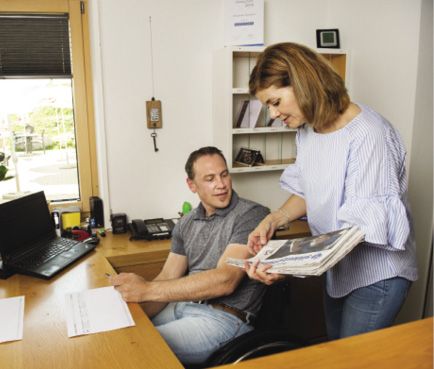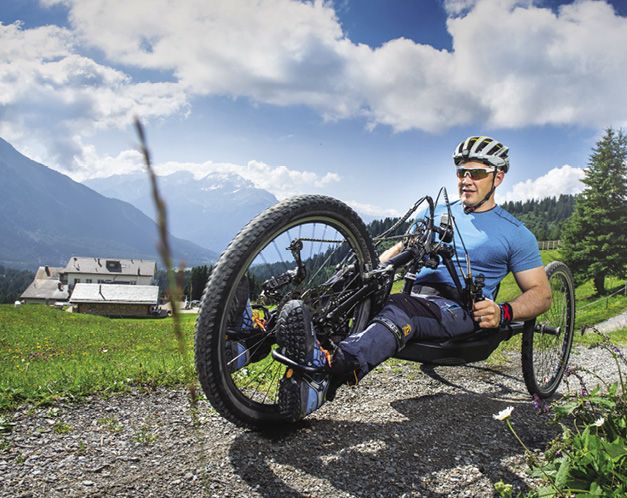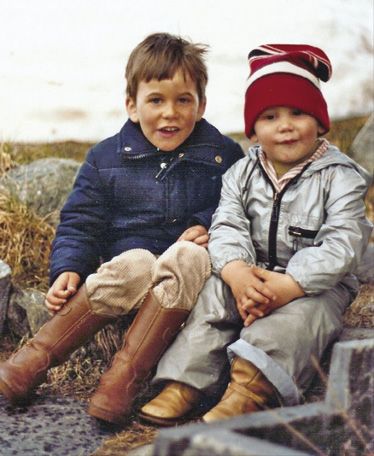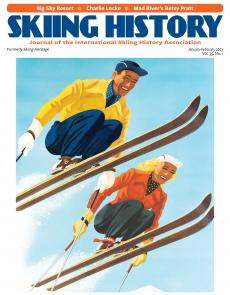SKIING HISTORY
Editor Seth Masia
Managing Editor Greg Ditrinco
Consulting Editor Cindy Hirschfeld
Art Director Edna Baker
Editorial Board
Seth Masia, Chairman
John Allen, Andy Bigford, John Caldwell, Jeremy Davis, Kirby Gilbert, Paul Hooge, Jeff Leich, Bob Soden
Founding Editors
Morten Lund, Glenn Parkinson
To preserve skiing history and to increase awareness of the sport’s heritage
ISHA Founder
Mason Beekley, 1927–2001
ISHA Board of Directors
Rick Moulton, Chairman
Seth Masia, President
Wini Jones, Vice President
Jeff Blumenfeld, Vice President
John McMurtry, Vice President
Bob Soden (Canada), Treasurer
Richard Allen, Skip Beitzel, Michael Calderone, Dick Cutler, Wendolyn Holland, Ken Hugessen (Canada), David Ingemie, Joe Jay Jalbert, Henri Rivers, Charles Sanders, Einar Sunde, Christof Thöny (Austria), Ivan Wagner (Switzerland)
Presidential Circle
Christin Cooper, Billy Kidd, Jean-Claude Killy, Bode Miller, Doug Pfeiffer, Penny Pitou, Nancy Greene Raine, Lindsey Vonn
Executive Director
Janet White
janet@skiinghistory.org
Membership Services
Jamie Coleman
(802) 375-1105
jamie@skiinghistory.org
Corporate Sponsorships
Peter Kirkpatrick
(541) 944-3095
peterk10950@gmail.com
Bimonthly journal and official publication of the International Skiing History Association (ISHA)
Partners: U.S. Ski and Snowboard Hall of Fame | Canadian Ski Museum and Hall of Fame
Alf Engen Ski Museum | North American Snowsports Journalists Association | Swiss Academic Ski Club
Skiing History (USPS No. 16-201, ISSN: 23293659) is published bimonthly by the International Skiing History Association, P.O. Box 1064, Manchester Center, VT 05255.
Periodicals postage paid at Manchester Center, VT and at additional mailing offices. Postmaster: Send address changes to ISHA, P.O. Box 1064, Manchester Center, VT 05255
ISHA is a 501(c)(3) public charity. EIN: 06-1347398
Written permission from the editor is required to reproduce, in any manner, the contents of Skiing History, either in full or in part.
Swiss Downhiller Silvano Beltrametti
His 2001 crash at Val d’Isère influenced ski racing safety practices.
On December 7, 2001, ski coach Michael Bont was in Switzerland, “celebrating like hell,” his Jacuzzi crammed with friends. Earlier that day, one of the skiers he trained, Silvano Beltrametti, had placed third in a World Cup super-G at Val d’Isère, France, thus qualifying for the 2002 Salt Lake City Olympics, two months away.
{Photo above: In 2010, Silvano Beltrametti skis the run named for him at Lenzerheide, Switzerland. Beltrametti family photo)

at Berghotel Tgantieni. They've run the
family-owned hotel for 15 years.
Fabienne Buhler photo.
Yet Beltrametti’s best event, the downhill, was the next day, and he was peaking. The previous spring, the Swiss racer had ranked seventh in the year-end downhill standings and placed fourth in downhill at the 2001 World Championships at St. Anton, Austria, just 11-hundredths of a second off the podium, at age 21.
The next morning in Val d’Isère, en route to the downhill, Austrian Olympic medalist Hans Knauss looked into Beltrametti’s eyes and thought, as he later told Bont, “This young boy is crazy. He will beat us!”
Beltrametti sensed that Austria’s Stephan Eberharter and his own Swiss teammate Didier Cuche were wary of him, too, even though they had beaten him 24 hours earlier.
Sure enough, on that clear morning, bib No. 14 was flying. No one would beat Beltrametti’s first interval. By the third split, exactly one minute 14.75 seconds into the two-minute race, Beltrametti posted another unbeatable time. Twelve seconds later, Bont, watching live coverage at home, thought “Holy s***, he takes a crazy line.”
Just then, Beltrametti vanished.
At 75 miles per hour, Beltrametti skidded, spun backward, sliced through the fence and flew into the trees. One of his skis clung to the netting, dangling eerily.

Fabienne Buhler photo.
Out of view, Beltrametti’s head rammed into an iron pillar, cracking his helmet. He landed on a sharp stone. His legs and torso went numb, his back radiated excruciating pain, and blood filled his lungs as he struggled to breathe. When he came to, Switzerland’s head coach, Dieter Bartsch, was with him on the snow.
“Those moments are still very present for me today,” Beltrametti says in mid-September from his hometown of Lenzerheide, 90 miles southeast of Zurich.
Beltrametti’s second personal trainer, Tom Jaeger, drove with Bont to the Grenoble hospital. Beltrametti’s parents, Barbara and Hans, helicoptered in. In the ICU, about an hour after Beltrametti had been stabilized and scans were taken, the Swiss ski team doctor told him flat out: “You’ve completely severed the sixth and seventh thoracic vertebrae and will be in a wheelchair for life.”
Bont and Jaeger cried and were “hitting the wall like boxers. We were angry,” Bont says.
Beltrametti says it was crucial to hear the truth immediately: that he was now paralyzed from just below the chest down. That way, he says, “I could start to let go of the old, right there. First, by becoming aware of what I could no longer do.”

brother, Claudio. Family photo.
Letting go wasn’t easy. For three months, Beltrametti thought about the accident every day. The public did, too. For weeks, all the Swiss newspapers were filled with Beltrametti news.
Bont knew that Beltrametti was a fighter and decisive to a fault. When he was transferred to the Swiss Paraplegic Center in Nottwil for rehab, Beltrametti took just four months to relearn everything, from putting on socks to breathing, to bladder and bowel control. Bont says it was a record.
“With small victories, I could fight my way back into life,” Beltrametti explains. “Just like in sports, I had to set daily goals and weekly goals [toward] an independent and happy new life. That was my final goal.”
For motivation, he leaned heavily on Bont and Jaeger. He shared with them absolutely everything. “We had no taboos,” Bont says, and “for us, as young coaches, it was kind of a gift as well, to learn that life is not just a medal, not just a hundredth of a second. For my coaching career, [it was] the biggest input I ever had.” (Bont later worked with World and Olympic GS champion Carlo Janka of Switzerland, tech skier Tanja Poutiainen of Finland and several others.)
Despite Beltrametti’s mental toughness, he couldn’t bear to watch the 2002 Olympic downhill, won by Fritz Strobl of Austria. “It was still too painful,” he says. Later that year, though, he watched footage of his fall “to process it and to make peace with the place of the accident. I no longer wanted to think about this place every day.”
Ultimately, Beltrametti attributed his crash to “a timing error. I was a little bit late to press for the turn, so to close the turn, I had to push with my legs and exactly where I pushed was a small ice patch and then aggressive artificial snow. Probably of 1,000 downhills, I only once [made] such a mistake.”
In response to a number of serious injuries, the International Ski Federation took note. To improve safety, race crews began to mark the line with blue dye, radically changing the look of speed courses. The next year in Val d’Isère, organizers reportedly hung 2,300 meters of A netting and doubled the length of the smaller B netting to 16,000 meters. At the site of Beltrametti’s crash, they installed a second A net as reinforcement and added a B net to stop the racer gradually.
But it was too late for Beltrametti, who even had to scrap his back-up career. (As a teenager, he had trained as a carpenter.) Yet the very next winter (2002–03), he was back on the slopes, in a monoski. “It was hard to go back on the snow, be at a children’s ski lift, ride the monoski three meters and fall over,” he admits, “but I was enormously happy I made this step.” Today, he skis every slope, including black diamonds, and uses sports to balance his life.
In 2003, he met Edwina Parpan, his “great love,” who would become his wife (in 2008) and business partner. For the past 14 years they have run the Berghotel Tgantieni in Lenzerheide, on the site where the Parpan family opened a mountainside restaurant in 1928.
In the 2004–05 season, Beltrametti was honored with a ski run named after him in Lenzerheide, and it’s hardly a cruiser. The Silvano Beltrametti piste is the steepest women’s World Cup slope in the world, with a 65-percent gradient. It demands technical skill and courage to take the ideal and risky line. Its difficulty, he says, “is also an honor for me.” He skis it regularly.
In 2006, Beltrametti finished a three-year certificate in sports management, which proved useful during his seven years as president of Lenzerheide’s organizing committee for racing. During his tenure (2009–2016), the resort hosted three World Cup finals (in 2011, 2013 and 2014), a women’s World Cup stop in 2016 and many junior races, FIS events and Europa Cup competitions.
For each World Cup event, he led a 12-person team that took over the planning and staging of the entire event, a task that began a year in advance: constructing the track, grandstands and World Cup Village; arranging accommodations for 600 staffers, athletes, coaches, supervisors and officials; managing 300 volunteers; and overseeing marketing and ticketing for 30,000 spectators, plus organizing side events and funding.
“We had a budget of five million Swiss francs and were always able to carry out the event with a balanced budget,” says Beltrametti.
“To implement accident-free and fair competitions, it was a lot of work and emotions” he adds. It was also quite physical.
To relax, Beltrametti still loves to make first tracks on a winter morning, but he doesn’t need or want to compete. “Paralympics are not an issue,” he says. “I know I could race there; I would certainly have talent, but I want to put my energy into my new profession and enjoy the sport for myself with friends and family, as a balance.” Off-season, he works out by hand-cycling and hunts deer with friends, motoring through nature in a customized ATV.
Hearing the birds chirp at sunrise, seeing the animals and experiencing the tranquility of the forest, he says, “gives me a lot of energy. I also really enjoy spending time with my hunting friends. The conversations, laughing, singing, cooking together—these friendships give me a lot of joie de vivre, and it’s nice that even as a paraplegic, I can still enjoy nature.”
Now, as he approaches his 44th birthday—and the 22nd anniversary of the crash—Beltrametti says, “There are things in life where you never get an answer. That’s how I see the accident. There was never a condemnation. Many coincidences led to me being paraplegic; the line error, the net that I cut open, the iron pillar that hit my head and the sharp stone that I hit with my back. There is no need to look for someone to blame. I have to accept that luck was not on my side that day.
“For 21 years, I have been able to lead a fulfilling, successful, content life in a wheelchair. I am very proud of my path and am much more conscious. When I was on the podium, I hadn’t really learned to enjoy these moments because my mind was already busy with the next competition.” 
Sportswriter Aimee Berg wrote about Zali Steggall in the September-October 2022 issue.

Table of Contents
WORLD CHAMPIONSHIP ($3,000+)
BerkshireEast/Catamount Mountain Resorts
Gorsuch
Warren and Laurie Miller
Sport Obermeyer
Peak Ski Company
Polartec
CHAMPIONSHIP ($2,000)
Fairbank Group: Bromley, Cranmore, Jiminy Peak
Hickory & Tweed Ski Shop
Rossignol
Snowsports Merchandising Corporation
WORLD CUP ($1,000)
Aspen Skiing Company
Atomic USA
Bogner of America
Boyne Resorts
Dale of Norway
Darn Tough Vermont
Dynastar/Lange/Look
Gordini USA Inc/Kombi LTD
Head Wintersports
Intuition Sports
Mammoth Mountain
Marker/Völkl USA
National Ski Areas Association
North Carolina Ski Areas Association
Oppenheimer & Co. Inc.
Outdoor Retailer
Ski Area Management
Ski Country Sports
Sports Specialists Ltd
Sugar Mountain Resort
Sun Valley Resort
Vintage Ski World
World Cup Supply
GOLD MEDAL ($700)
Larson's Ski & Sports
McWhorter Driscoll LLC
Race Place/Beast Tuning Tools
The Ski Company (Rochester NY)
Thule
SILVER MEDAL ($500)
Alta Ski Area
Boden Architecture PLLC
Dalbello Sports
Deer Valley
EcoSign Mountain Resort Planners
Elan
Fera International
Holiday Valley Resort
Hotronic USA/Wintersteiger
Kulkea
Leki
Masterfit Enterprises
Metropolitan New York Ski Council
Mt. Bachelor
New Jersey Ski & Snowboard Council
Nils
Russell Mace Vacation Homes
SchoellerTextil
Scott Sports
Seirus Innovations
SeniorsSkiing.com
Ski Utah
Snowbird Ski & Summer Resort
Steamboat Ski & Resort Corp
Sundance Mountain Resort
Swiss Academic Ski Club
Tecnica Group USA
Timberline Lodge and Ski Area
Trapp Family Lodge
Wendolyn Holland
Western Winter Sports Reps Association
World Pro Ski Tour


